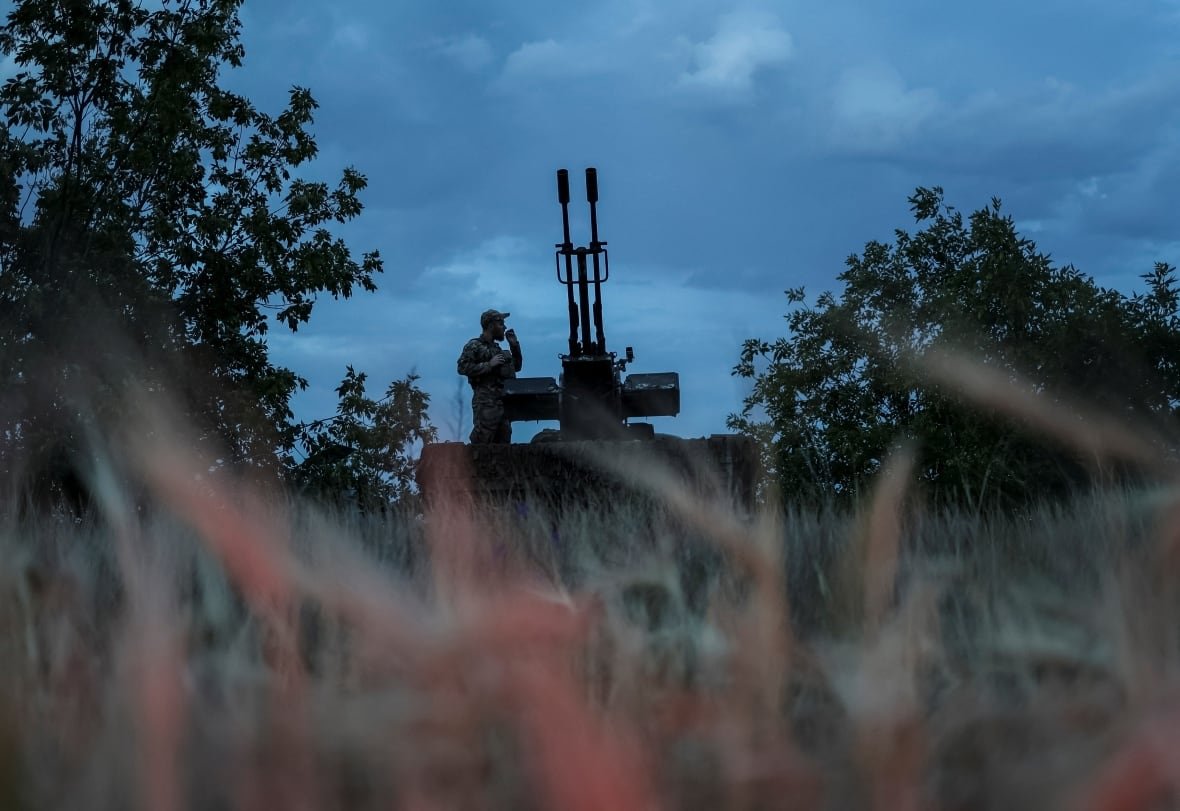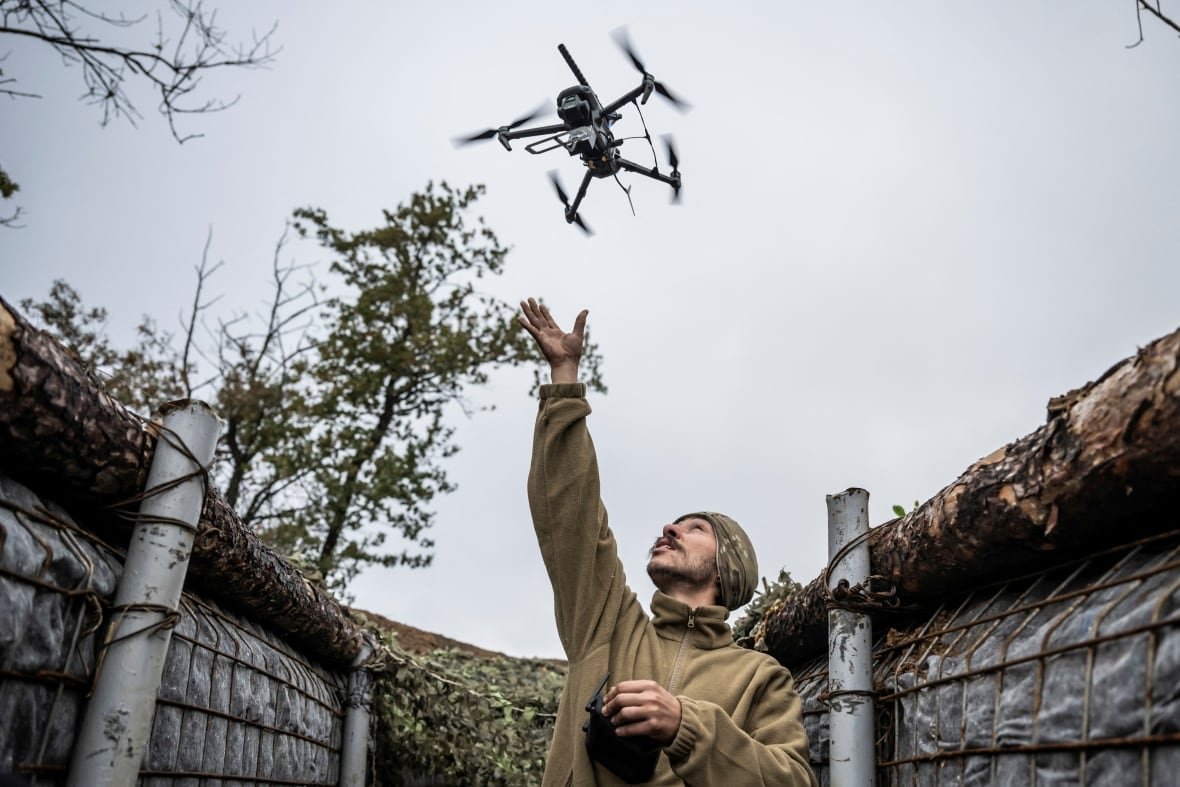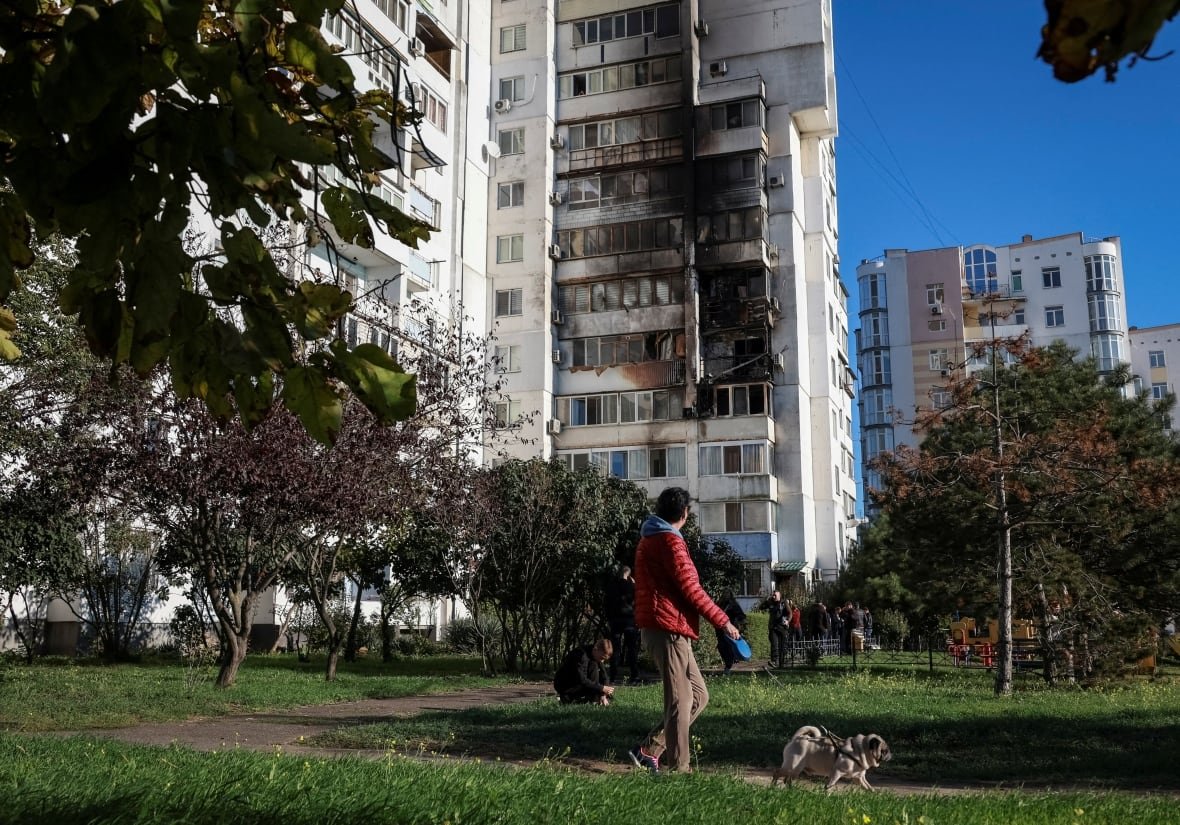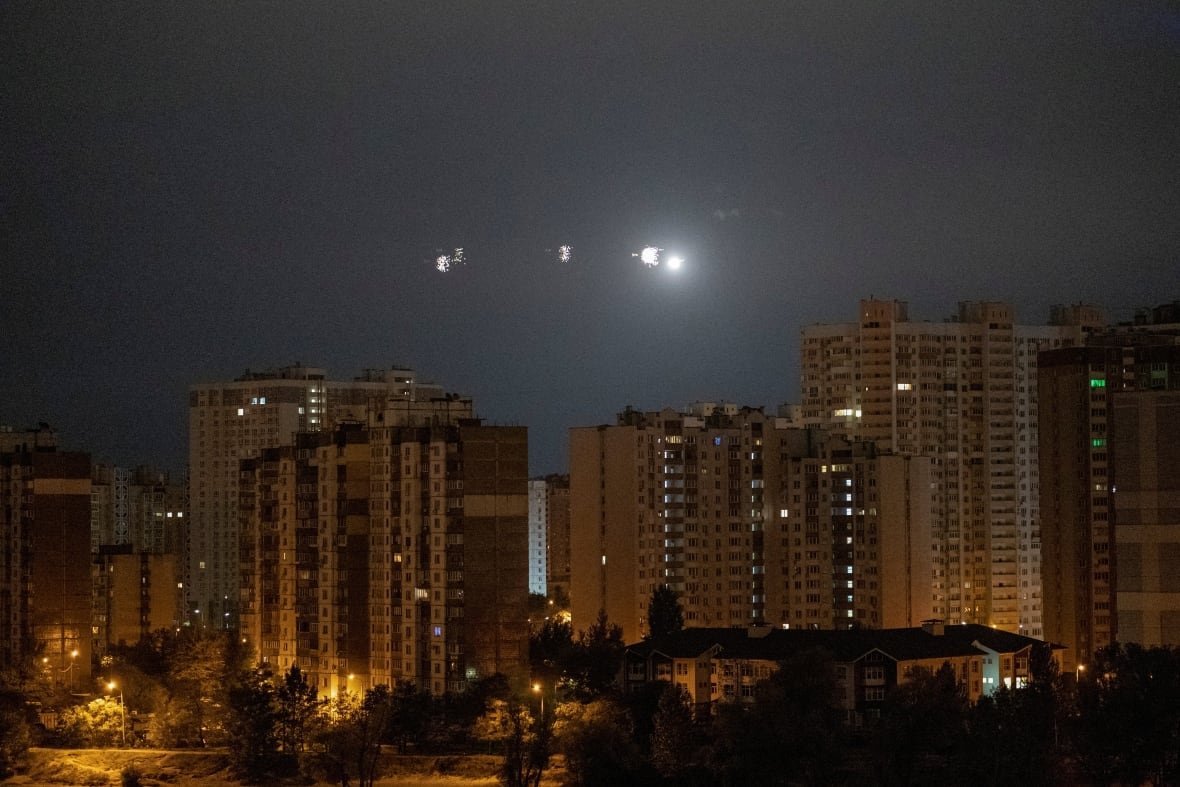In Nikopol, Ukraine, even fire trucks aren’t safe from hostile drones.
That’s why two of the city’s newest fire trucks have anti-drone jammers mounted on them.
A German non-profit group, Ukraine-Hilfe Berlin, donated the trucks and jammers to help replace vehicles and equipment lost in drone attacks.
“Russian drones have been attacking fire-trucks in Nikopol … for some time now,” and have wounded some firefighters, said Vitali Olijnik, a member of the group, via email.
Nikopol sits on the north shore of the Dnipro River across from an occupied portion of Ukraine, meaning the city and its residents are in easy range of incoming drones. The same is true of the city of Kherson, on the same side of the river, about 200 kilometres southwest.
“Apart from artillery fire and missiles, there are a lot of drones which attack [Kherson] on a daily basis,” Tatyana Orgakova of the Ukraine Media Crisis Center said in a recent video after visiting the city.
A local paramedic told the Globe and Mail he receives 10 calls per day about drone attacks on civilians.

Mounting reports from Ukrainian areas along the front lines say civilians are frequently being hurt or killed by Russian drones. The United Nations says “a large portion” of civilian casualties in front-line areas last month involved drones — including roughly half of those in the Ukraine-controlled parts of the region of Kherson.
“This is, tragically, a daily reality for Ukrainians,” said Wayne Jordash of Global Rights Compliance, a non-governmental organization focused on human rights.
“Every day, Ukrainian prosecutors’ offices open criminal cases concerning the suspected use of drones in violation of international humanitarian law,” Jordash told CBC News by email, referring to the intentional targeting of civilians or when aggressors fail to make the necessary distinctions when attacking.
Some reports cite the use of small, first-person view (FPV) drones, which can be rigged to drop explosives on targets below.
Jordash says FPV drones “are an incessant threat” for civilians living near front-line areas, where some have reported “being subjected to sadistic ‘human safaris’ in which they are the target of Russian forces hunting them down.”

More and more drones
Russia launched its wide-ranging invasion of Ukraine 32 months ago, leaving both sides in all-out conflict ever since.
Ukraine has increasingly looked to drones to strike back, using an assortment of types to hit targets near and far from the front lines.

Oleksandra Molloy, a senior lecturer in aviation at Australia’s University of New South Wales (UNSW) Canberra, says Ukraine had a small number of domestic companies involved in drone production and services at the war’s outset. Today, there are scores of companies working in this space.
“It was absolutely exponential growth,” Molloy said, noting Ukraine needed to not only develop and test the drones, but ramp up production and make them available on a continuous basis to the military.
Ukrainian President Volodymyr Zelenskyy said early this month the country can now produce four million drones annually. He said last week said that Kyiv has purchased and provided one million of them for the front.
Yet alongside Ukraine’s own advancements, Russia has developed drone capabilities of its own.

Molloy says there are changes on the battlefield all the time, with new drones and new counter-measures being rapidly invented and implemented.
“It’s all evolving and developing as we speak,” said Molloy, the author of a newly published paper on the lessons learned from the use of drones in the Ukraine war.
Dangers across Ukraine
Bigger and longer-range drones can also wreak havoc — including in areas farther afield, like in Ukraine’s northeastern Sumy region, where authorities say a child and two other people were killed on Tuesday in an overnight attack involving what Ukrainian media identified as Shahed-type drones — a type of kamikaze drone that’s considerably larger than an FPV drone.
Earlier this month, in the Black Sea port city of Chornomorsk, another attack involving similar drones saw at least one slam into an apartment building and cause a fire.
Chornomorsk Mayor Vasyl Huliaiev said the attack had hit “a peaceful city” and that “everyone understands that they target civilian infrastructure, which is very bad.”

Russia has denied targeting civilians, but its missiles and drones have routinely struck Ukrainian population centres.
Jordash said Russia has “weaponized drones extensively in attacks on civilian targets,” and he pointed out that incoming drones pose dangers even if they do not reach their intended targets.
“There are devastating consequences that may still occur due to falling debris of intercepted drones,” he said.
Ukraine’s own long-range attacks on Russian soil have tended to strike military and industrial targets — including air bases, oil refineries, fuel depots and naval ships. But its drones have also made appearances in Moscow.
‘There is no single answer’
Many variables come into play when defending against drones.
“There is no single answer for that,” said Molloy. The specific attributes of the attacking drones, their ability to evade detection and the tools the defending side has at its disposal, all factor into the mix.
She says stopping smaller drones can be challenging — because large-scale air defences aren’t necessarily the right tool.
“We can’t really spend those air missiles and air defences systems against … one or a few drones, it won’t be really sustainable,” said Molloy.
Jordash says forcing Russia to end the war is the most effective way to stop the harms that civilians are facing.
He said the invasion is “an illegal act of aggression,” which leaves states obliged under international law to work together to stop it.
“It seems quite obvious that the Ukrainian people have suffered the brunt of this unjust reality for long enough, and appropriate measures must be taken to remedy this serious breach,” Jordash said.














